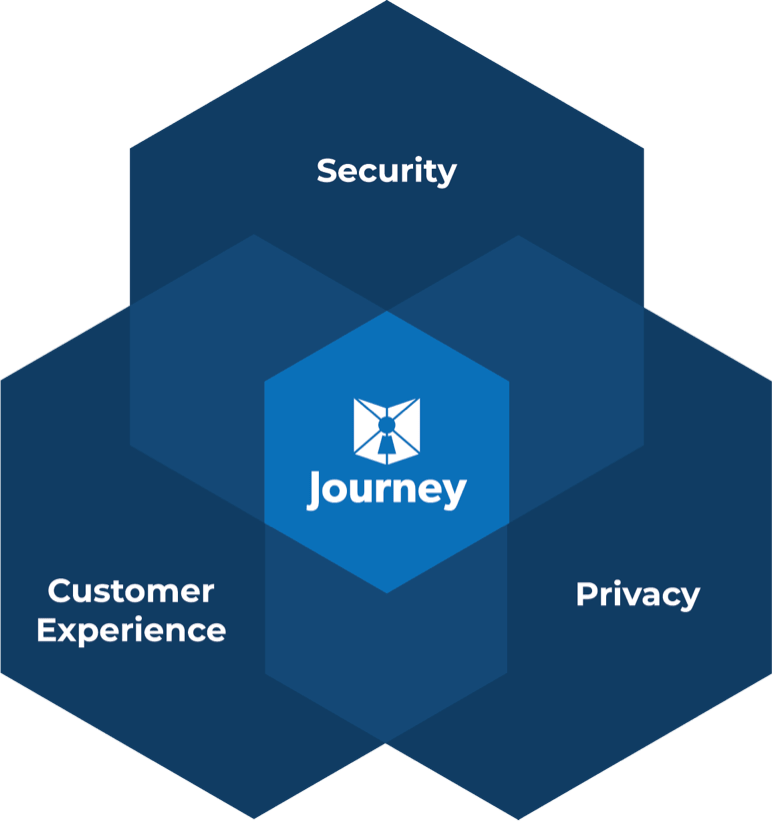The average individual has over 200 usernames and passwords, and are constantly told that they should never repeat passwords for different companies (although most people do anyway, because the alternative is too hard to manage). Customers notice when a company makes life easier. This makes consumers feel that you respect their time and information and provide personalized service that gives them what they are looking for quickly.
A key approach employed by successful companies today is Identity Access Management or IAM. This creates secure identification and transactions, typically using some sort of knowledge-based authentication like usernames, passwords, pins, “security” questions, etc.
There’s a better way, now that technology has advanced so rapidly. Read on to learn more.
A Quick Look Back at Knowledge-Based Authentication (KBA)
For decades, consumers have set up passwords, PINs, security questions, and more. This style of security is known as KBA. Customers must remember hundreds of pieces of information to do business online.
This impacts almost every part of their lives. They must remember passwords to pay bills, bank, shop and access entertainment.
The big problem with KBAs is their vulnerability to hackers. Criminals use programs to run 2 billion operations a second to guess passwords. They can also gain access to your browser and swipe information. And of course, most of this information is available on the dark web for pennies.
Some individuals use automated management systems to “secure” their passwords. Yet, these systems are vulnerable to attacks that could unlock all your information. If you use the same password so you can remember it, you’re a hacker’s dream.
So, how about using security questions to back up passwords? These questions often ask personal information such as first pet or car or birthplace. Unfortunately, 30% of the time, the user can’t remember the answer to the question.
Many people also increase their risk of getting hacked by taking fun Facebook quizzes. Finding out your aura color often entails publicly divulging information. These are often the answers to common security questions.
How best to eliminate usernames and passwords?
IAM verifies who you are and also authenticates the user. This offers protection for businesses to ensure valid access to their organization. IAM plays a key role in employee access as well as customer access, known as CIAM.
Essentially, most IAM solutions are based on something you know, usually a username and password or some sort of KBA, but there are much better ways that are available now leveraging powerful sensors in laptops and mobile phones that make the log-in experience faster, more secure, and more private.
Maximum security requires verifying the person without solely relying on what they know. Remember, hackers can “know” information. The protocols must also offer a positive and easy interaction for the customer.
The following are some examples of IAM solutions.
Biometrics
Biometrics are something that you “are” and are near impossible to steal. It offers a quick solution with a high degree of accuracy in identifying the person.
Biometric security uses unique biologic comparisons such as fingerprints and facial recognition. More advanced systems employ retinal scans. Each of these approaches provides an individual comparison to a stored record. This type of authentication is now much more available with the advent of facial recognition on smartphones.
CIAM
Customer identity and access management (CIAM) offers security and an enhanced customer experience. This solution creates a unified customer login procedure for the company. Uniform systems decrease the risk of data breaches.
CIAM systems use websites, checkouts, and more to collect and centrally store customer data. This provides employees with 360-degree visibility of their customers’ profiles. The customer identity remains secure throughout the system.
Common CIAM hosting solutions offer the following:
- Customer registration
- Multi-factor authentication
- Customers can use self-service account management
- Customers can manage their preferences and consent
- Businesses can manage data access
- Businesses can use directory services
- Single Sign-on options
Optimal CIAM solutions are invisible and seamless for the user. They offer security whether they’re accessed via the web or mobile applications.
How Are IAM and CIAM different?
IAM focuses on access and authentication within an organization. This ensures that account privileges and access remain current.
Consider the example of an employee leaving or changing positions. Their account must change immediately to maintain a secure environment.
In contrast, CIAM works to secure customer authentication and access. Customers access CIAM systems when creating accounts or making account changes. Consumers always have the option to request removal from the businesses list.
Some of these CIAM customers may be other businesses. Thus, CIAM works with B2B and B2C companies.
CIAM Implications
Today, businesses must adhere to data privacy rules such as GDPR and CCPA. These regulations apply when identifiable customer data is collected, handled, transferred, or stored. Using CIAM solutions help organizations meet compliance in the following ways:
- Documents the how, when, where, and why you collect and process customer data
- Provides a transparent view of your customer’s personal information collection and use
- Creates a consistent protocol for managing customer profiles, consents, and preferences
- Keeps all versions of consent records for up to 7 years for audit purposes
- Centralized data governance ensures the enforcement of all consents and preferences
- A single platform limits costs while managing consents, authentication, authorizations, and identities
- Decreases compliance risk by protecting sensitive data and intellectual property
Customers keep the power to manage their choice for how their information is used. They can see what data the company collects and logging in is an easy experience. This increases customer trust, satisfaction, and loyalty.
What Is SSO?
Single sign-on (SSO) is another type of session and user authentication protocol. In the business setting, SSO gives employees access to the tools and data they need to work. It’s also used for authenticating customers during regulated industry contact center calls.
The user gives one set of login credentials to gain access to multiple applications. An example of this type of credential is a name and a password. Various size businesses and even individuals can use SSO for username and password management.
Basic SSO web services have a module that retrieves authentication credentials from the server. The Lightweight Directory Access Protocol compares the data input. If it matches, the user may proceed to use all pre-approved applications.
This eliminates the need for repeated logins during the same session.
Are You Looking for Secure, User-Friendly Access Solutions?
This article described several approaches to ensuring business and customer data security. It also described solutions to provide compliance with data privacy regulations. Some of these options included IAM and CIAM.
Journey offers many types of secure interaction solutions. You can choose quick, simple customer verification and authorization systems.
We also offer options that exceed IAM or CIAM to secure interactions and transactions. You may choose payment processing and document signing all within a single secure call. Contact us today to learn more about our authentication solutions.



